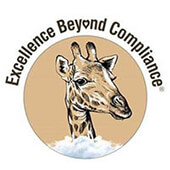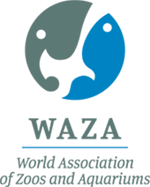Academy Contributors
 Getting Better All the Time: Making All the Difference in the World Starts with One Thought or Idea, One Action, and One Animal Getting Better All the Time: Making All the Difference in the World Starts with One Thought or Idea, One Action, and One Animal
By James F. Gesualdi and Sabrina Brando
To keep ahead, each one of us, no matter what our task, must search for new and better methods for even that which we now do well must be done better tomorrow.
—James F. Bell
Note: This edition of "Getting Better All the Time" is written in collaboration with Sabrina Brando, director of Animal Welfare for the World Association of Zoos and Aquariums.
 In devoting our lives to working on continuously improving animal welfare—and endeavoring to do so across the caring zoological profession (in zoos and aquariums) and throughout the world—we remain mindful of the starting place for such positive change. It always starts with one person, one thought or idea, one action, or one conversation, to make a change for one or more animals at a time. It may seem small, and the process may seem frustratingly slow to some, but it works and can be highly effective at producing change that is good and lasting. In devoting our lives to working on continuously improving animal welfare—and endeavoring to do so across the caring zoological profession (in zoos and aquariums) and throughout the world—we remain mindful of the starting place for such positive change. It always starts with one person, one thought or idea, one action, or one conversation, to make a change for one or more animals at a time. It may seem small, and the process may seem frustratingly slow to some, but it works and can be highly effective at producing change that is good and lasting.
Each one of us, whatever our role, is fortunate to have the ability to act on behalf of animals and their interests and well-being. We have the opportunity to act because of the animals within our care and the care of our zoological organizations. We have the honor, delight, and responsibility to act. The more that we seize upon that responsibility and act in an enlightened manner for the benefit of each individual animal (and each affected species), the greater the positive difference we can make.
The most powerful action each one of us can undertake in any moment may be invisible at the outset. A thought itself, unseen until translated into some form of expression or manifestation, can change the world. We focus on exploring opportunities and searching for possibilities, instead of focusing on obstacles and what cannot be achieved. We ask "What can we do?", as there is almost always something that we can do. And that's what we strive to do every day—to change things for the better for the animals in our care and in the wild.
It is simply beautiful to realize that we can act to choose or create our thoughts—each moment—and do so in a manner that can change the world. All that just by changing our thinking. For example, criticism may or may not be correct or constructive, and too often, it is used to undermine rather than build and better things. Yet, we can always choose to use such criticism constructively. That sort of thinking and corresponding action is transformational, and it is the way to demonstrate our overriding commitment to the animals in our care. This is one of an infinite number of ways we can lift our thoughts, develop ourselves, and better serve animals.
Choose or create a good thought. Think about one thing differently. Ask yourself, how can this be improved in a meaningful and measurable way? Start with that one thought, one action, and one animal—and the world will be a better place.
***
Using USDA Animal Welfare Inspection Guide Updates to Excel
The U.S. Animal Welfare Act (AWA) is a starting point to be built upon through accreditation, certification, and ongoing professional development. Excellence Beyond Compliance® is an individual mindset, organizational culture, and collective consciousness, wherein animal welfare and animals' interests drive everything we do—and we strive to continuously improve our service on behalf of animals (including their well-being, protection, and conservation of species in the wild). Leveraging the AWA and the expertise and guidance of agency leaders is an outstanding means of getting better.
The agency has issued updates to its Animal Welfare Inspection Guide, which is a reference document for inspectors, intended to promote uniformly high-quality inspections. It is drawn from the AWA regulations, and thus is an invaluable tool for proactively preparing for inspections, managing for regulatory compliance, and using the AWA and the Inspection Guide to spark good practices to make animals' lives better. The latest Inspection Guide can be found here: https://www.aphis.usda.gov/animal_welfare/downloads/Animal-Care-Inspection-Guide.pdf. Some highlights of key revisions include the following:
Photographs taken by the inspector during an inspection: These should be shown to you during the inspection exit interview, to help you and your organization better understand any suggestions or concerns. It is further recommended that the zoological organization itself take photos and videos as appropriate during the inspection, to facilitate in-house discussion, learning, and follow-up, including any corrective measures and improvements.
Special circumstances regarding animal inventory counts: The Inspection Guide emphasizes the importance of the inspector getting and confirming an accurate and complete inventory (or census report of resident animals). Provision is made for animals and species whose behavior may make it impossible to find or observe them at certain times of day or year, and for situations with large groups of animals or naturalistic and expansive habitats. These considerations are helpful, in that the agency recognizes that the animal's well-being should take precedence over having the head count be perfect during an inspection. Zoological organizations must be vigilant in maintaining good records of the resident animals and demonstrating advanced means of monitoring and observing those sometimes hard-to-view animals. This is how the inspector will assess the facility in such situations, to assure animal welfare.
Nonregulated animals: The agency notes that the presence of nonregulated animals (animals not covered by the AWA) will be considered to the extent those animals may impact the health and well-being of regulated animals at the facility, by way of things like potential disease transmission or stressing regulated animals. (Of course, it is a good practice to treat all resident animals as covered under your animal welfare program and the AWA.)
Determining adequacy of veterinary care: This section discusses the inspector's methods for examining the adequacy of veterinary care, especially when an item of concern is identified during the inspection. Another section on veterinary care, Recognition of Pain and/or Distress, identifies signs to prompt further examination of potential pain or distress and that may be helpful to review to confirm the adequacy of existing staff training, as well as observation and reporting related protocols.
Marine mammal facilities: This portion of the Appendix provides a thorough and detailed overview of the marine mammal regulatory requirements the inspector should review and assess at a zoological organization maintaining marine mammals. Key items noted include veterinary care; space, as well as marine mammals housed in unusual circumstances; feeding, including prep, quality, and nutritive value; water quality; shelter and shade, with a focus on eye health; public barriers; separation; employees; and recordkeeping. All organizations caring for marine mammals should immediately review these pages, and use them as a checklist for regular periodic self-inspection. This will eliminate preventable noncompliances and allow marine mammal facilities to foster improvements in these areas.
***
Choose to think better, to create positive change, to act, and make the most of the opportunities afforded us to make all the difference in the world.
When you change the way you look at things, the things you look at change.
—Dr. Wayne W. Dyer
For those of you in Southern California, on the evening of February 13, 2019, James F. Gesualdi will be speaking at the Aquarium of the Pacific in Long Beach on "Shifting from Being Right to Doing Right for Animals." Visit http://www.aquariumofpacific.org/events/info/shifting_from_being_right_to_doing_right_for_animals/.
© 2019 James F. Gesualdi, P.C. and Sabrina Brando. The opinions expressed herein are solely those of the authors. This is not, nor should it be construed as, legal advice.
For more information on Excellence Beyond Compliance®, visit excellencebeyondcompliance.com.
For more information on the World Association of Zoos and Aquariums, visit http://www.waza.org/en/site/home. |